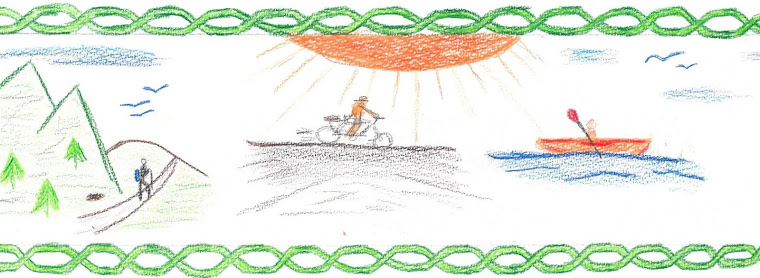 |
| Solitary sailor upon the sea, as seen through one of the lenses of my binoculars |
My first winterization required two half-day workdays. On the first day, I cleaned the cabin, bilge, and storage compartments. I also added antifreeze to the fresh and salt water lines, spending most of my time winterizing the head. None of these tasks, however, made the boat un-sailable. Fortunately, I completed these tasks before the first hard freeze.
On my second day, I not only added a second bow line and spring line but also fogged the outboard, removed both sails, and removed most of the running rigging, rendering the boat un-sailable without an equal amount of pre-sail work.
I have never owned a vacation home in the mountains or at the beach, or anywhere else for that matter, but now I think I can empathize with how owners of vacation homes might feel after closing up their getaway for the season. Nearing the end of my second workday, I felt like I was saying goodbye to a good friend before leaving on a long trip, and we did not know when we would see each other again. No longer would I be able to drive the 20-30 minutes to the dock, and within another 15-20 minutes have the boat rigged and out on the water. Winter had not yet set in and I was already thinking about – dreaming about – sailing next spring, perhaps as soon as April, or even March.
My winterization blues intensified yesterday when, from the sixth floor window of a beachfront timeshare at Virginia Beach, I looked out over the ocean and saw a lone sailboat out on the water. I picked up my binoculars, lying nearby, and focused on this solitary sailor on the sea. As inches of snow and ice from a recent storm were still covering the beach and boardwalk, some sailor and crew were enjoying a post storm sail on a nearly glassy sea bathed in sunshine, and I wished I were out on the water with them.



